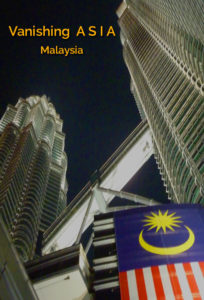A country cleaved in half by the South China Sea, Malaysia has a history that reaches back 40,000 years.

In this episode, meet the last remaining cane-makers in Kuala Lumpur, survey an irreplaceable 1900s Malay village chief’s Kampung house and explore Pekan Ampang, an 1850’s village under siege from modernization.
Narrated by Will Yun Lee.
“Borrowed Time”
Kuala Lumpur… it’s one of the most cosmopolitan cities in Southeast Asia. A new building here. A new road there. Always moving forward. Never looking back.
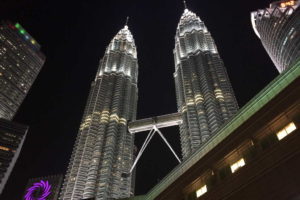
So it’s a shock that amongst the teeming skyscrapers… sits one of the oldest surviving traditional Malay houses.
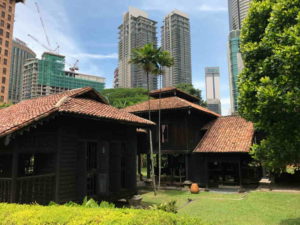
The 100 year-old ‘Village Chief’s House’ situated in central Kuala Lumpur
This is the Rumah Penghulu Abu Seman or “Village Chief’s House”. It was built at the turn of the 20th Century… in a tiny village in the Kedah region five hours north of Kuala Lumpur.

That’s right. This exquisite traditional Malay house doesn’t belong in the city. Yet it occupies one of the most coveted plots of land in Kuala Lumpur.
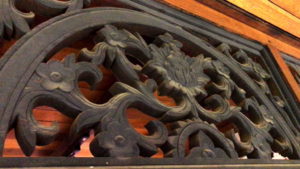
Intricate detailed carvings adorn the house
How did the century-old ancestral home get there?
What is the significance of its steeped in history architecture?
What threatens the future of the village chief’s home?

Elizabeth Cordosa, director of the Badan Warisan Malaysia (the Malaysian Heritage Trust) reveals all its secrets.
“Raising Cane”
Since the 19th Century, cane and rattan furniture from Southeast Asia has been popular throughout the world.
These days, the vast majority is mass-produced in large factories. While serviceable and cheap, these machine-made pieces are not built to last.
But in Kuala Lumpur, there is still one place devoted to creating the furnishings by hand. And it’s situated in a ramshackle building astride a busy motorway.
Meet the man who insists on doing it right… Mr. Chong Yon Yam.

Cane craftsman Chong Yon Yam
In the business for more than forty years, his shop is the last remaining all handmade cane maker in Kuala Lumpur.
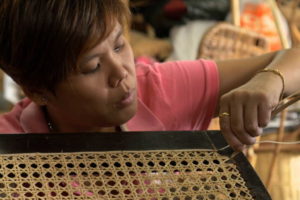
Mr. Chong’s daughter-in-law, Yip Hee Ying, handles all the hand weaving
And what sets apart a hand-woven piece from a machine-made one?
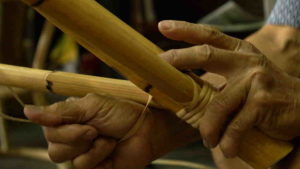
Hand tying the frame together
Explore the process of creating a handmade piece of cane furniture, uncover the problems and challenges of maintaining cultural traditions in a mass-produced world and discover what the future holds for handcrafting cane furniture.
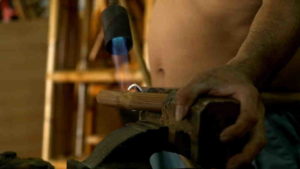
Heating up and bending the frame by hand
It’s all here.
“When Will The Gods Return?”

Kow Ong Yah Temple in Ampang
The Nine Emperor Gods Festival is a traditional Taoist event. It starts on the first day of the ninth month of the lunar calendar. The annual nine-day celebration honors the return of the nine emperor deities to earth.
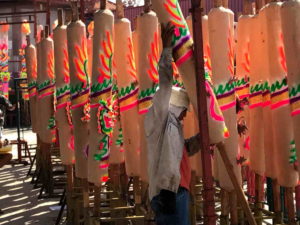
Preparing for the arrival of the Nine Emperor Gods
Home to this annual celebration is the Kow Ong Yah Temple in the town of Ampang, a mere eight miles from the center of Kuala Lumpur. Months are spent planning the rituals to invoke and receive the gods. Devotees from around the world travel here to pay their respects.
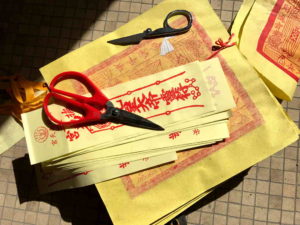
Blessing for the Nine Emperor Gods
Sadly… much of this tiny town, established in the mid-19th Century, is under threat of demolition.
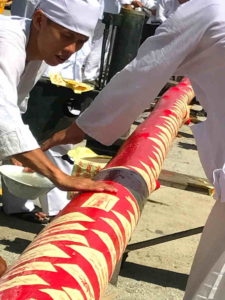
The blessing are pasted to red pole that will be raised in their honor
How is that possible? Why would it be allowed? And what of the Nine Emperor Gods? If the temple and town disappear, how will they return?
It’s all revealed in Episode 4 – Malaysia of “Vanishing ASIA.”


